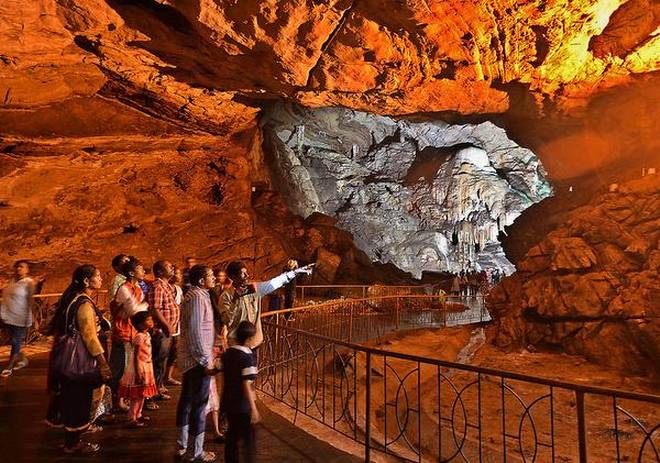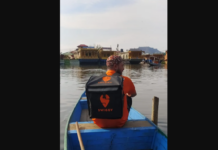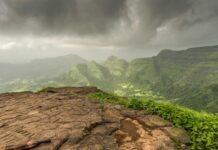A marvelous creation of nature in Andhra
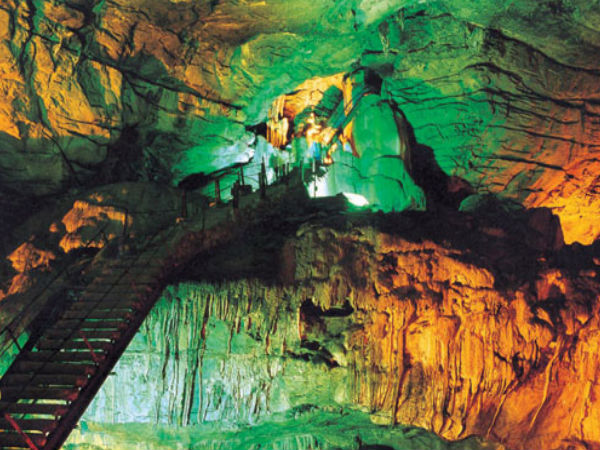
Located on the east coast of India, the Borra Caves are situated in the Ananthagiri hills of the Araku Valley in Visakhapatnam district. British geologist William King discovered this million years old cave in the year 1807 and it has been a tourist favorite ever since.
Breathtaking hilly terrain, beautiful landscape, semi-evergreen moist deciduous forests, and wild fauna of the Borra Caves are a visual feast. A marvelous creation of nature, the caves were formed when river waters flowed through a limestone area and the calcium carbonate turns into calcium bicarbonate, which is easily washed out by the running water. The most striking feature of the caves is its exquisite variety of speleothems ranging in size and irregularly shaped stalactites and stalagmites.
Borra Caves are deemed to be one of the largest in the country and are perched at a whopping elevation of about 705 meters. They are basically karstic limestone structures extending to a depth of 80 m and are considered to be the deepest cave in India. The combination of sunlight and dark conjures amazing dancing shaped in the depths of the Borra Caves which is a sight in itself.
Natural skylights in the caves make way for kaleidoscopic imagery that imparts them a unique enigma of their own. Animal lovers will find bats as well as the golden geckos hiding in the shadows of the niches. The journey up to the main destination with its picturesque location and a thrilling hike is a treat in itself. Visit this destination and explore the unique beauty of Araku Valley in all its glory.
History
The history of Borra Caves is perhaps as old as the history of the Araku Valley itself. Believed to have been formed as a result of perennial water flows over millions of years, the caves were discovered by British geologist William King in the year 1807.
The process of the formation of the Borra Caves is quite intriguing as well. Humic acid in the water reacts with the calcium carbonate in the limestone and dissolves the minerals breaking the rock gradually. As a result of this, varied rocks and shapes are formed in the caves. The total length of the Borra Caves is about 200 meters and the Dandakaranya- Bolangir-Kibur train track passes over the caves. Anthropologists have also found stone tools of middle Paleolithic Age dating back to 30000 to 50000 years indicating human habitation in the Borra Caves.
Trekking
The picturesque territory and thrilling terrain of Borra Caves is the perfect destination to pursue a little trekking adventure over the weekend. With the waters of Katika Waterfalls cascading nearby, the scenic beauty of this place is only second to the adrenaline rush that a hike here provides. The trekking difficulty is easy to medium, so even beginners will not have a problem in navigating this destination.
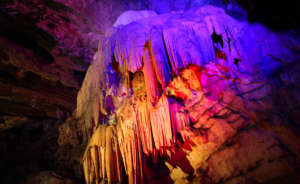 The journey up to the caves can take 3-4 hours, but the final view is definitely worth all the hard work!
The journey up to the caves can take 3-4 hours, but the final view is definitely worth all the hard work!
Best time to visit
November to March are the best months to visit this destination as the weather is pleasant and easier to navigate in as well. Morning hours are cooler and less crowded.
How to reach
The Borra Caves are located in the Anantagiri hills at Visakhapatnam. The best way to reach this destination is by hopping aboard the Kirandul Passenger train which leaves Vizag by 7:00 AM (58501/Visakhapatnam- Kirandul Passenger) and passes through Borra caves, Araku and goes till Kirandul. Alternatively, you can take tourist vehicles up to the caves as well.

